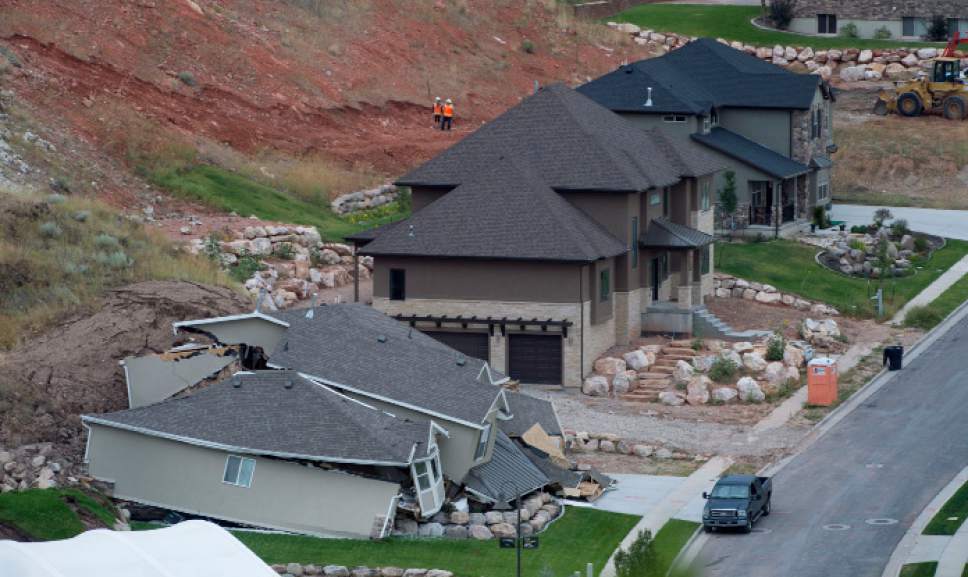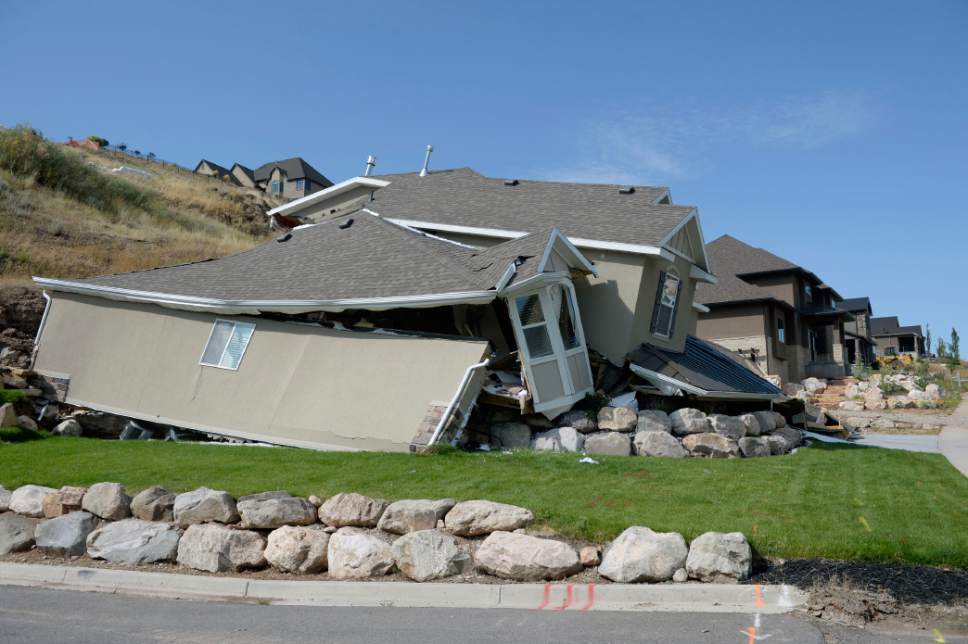This is an archived article that was published on sltrib.com in 2017, and information in the article may be outdated. It is provided only for personal research purposes and may not be reprinted.
After a recent influx of precipitation, North Salt Lake officials and geologists detected movement in the area of a 2014 landslide that destroyed a home and threatened others, but authorities are not sounding alarms.
Geologists believe the majority of the movement in land near Parkway Drive occurred between Jan. 9 and 11, when snowstorms fell on the area either side of a warm spell, according to a summary from landslide hazards geologist Gregg Beukelman, of the Utah Geological Survey (UGS).
The most significant movements recorded were points in the eastern area, the summary states. One point shifted 46.5 inches horizontally since its installation on Dec. 9, 2015, and another shifted 52.8 inches horizontally since its installation on Nov. 3, 2016. Other points in the landslide area moved 17 inches and 1.4 inches horizontally since April.
Only horizontal movement values were reported because of the difficulty in getting precise vertical measurements, the summary says.
"The UGS will continue to monitor accessible points and analyze for significant trends that might indicate continued landslide activity," the summary states.
Ken Leetham, North Salt Lake's city manager, said geological observations are "typical erosion movement" in wet conditions. Data over four days — from Jan. 9 to Jan. 12 — indicate that groundwater levels rose as much as 4.5 inches, according to the summary.
"Right now, it's mostly surface movement," he said. "We don't have major or catastrophic movements under the surface. ... I think that we've seen the worst that we're going to see up there," he said, referring to the 2014 incident.
Nevertheless, Leetham said, city officials will be "vigilant" in watching and monitoring the land movement for signs of danger. "We're always concerned with water in the ground."
Since the UGS last monitored the area on Nov. 3, land in the western area of the slide is moving downslope, the summary said, and only shows possible slight expansion to the west.
Though future activity of the landslide is impossible to predict, the summary says there is "a high probability" of future activity, including the potential for shallow, local failures or a "more global failure of the entire lower slope."
The potential failures, the summary says, could "easily" affect a nearby parking lot, Parkway Drive and its sidewalk, a tennis facility, a home, and adjacent areas leading to safety issues and property damage.
Last year, the city stabilized the slope, Leetham said, but there is "more remediation work that should be done on the slide before we say the repair work is complete."
There is not a funding plan in place for the repairs' completion, Leetham said, partially because land in the area is private.
While the city has shared new information with homeowners in the area, "there's not a way to get the work done," he said.
Twitter: @mnoblenews





